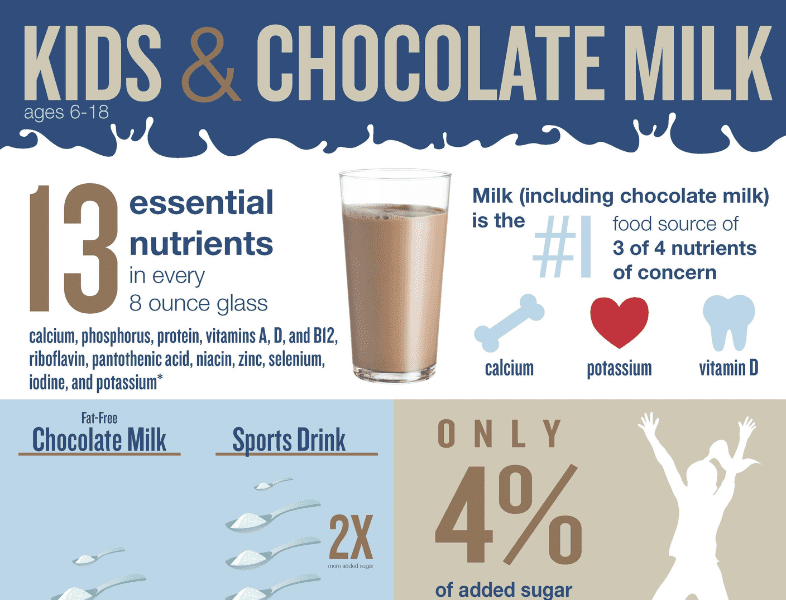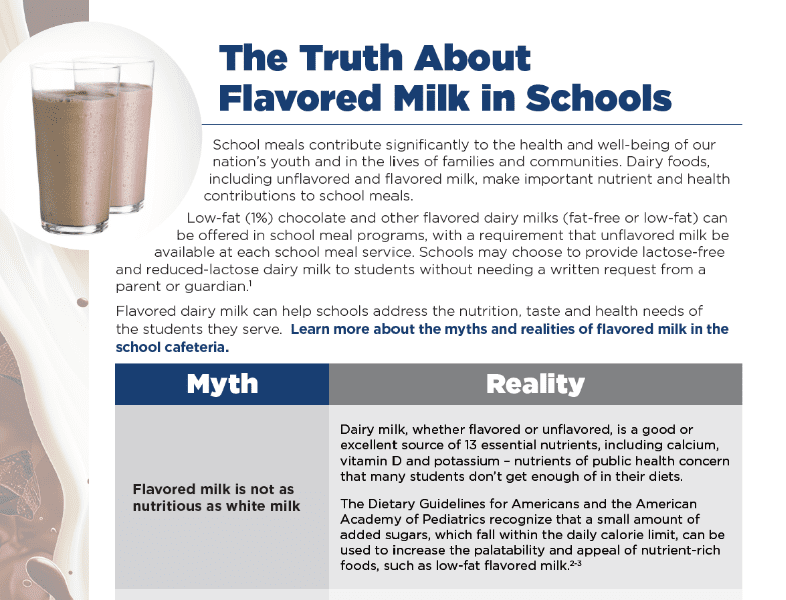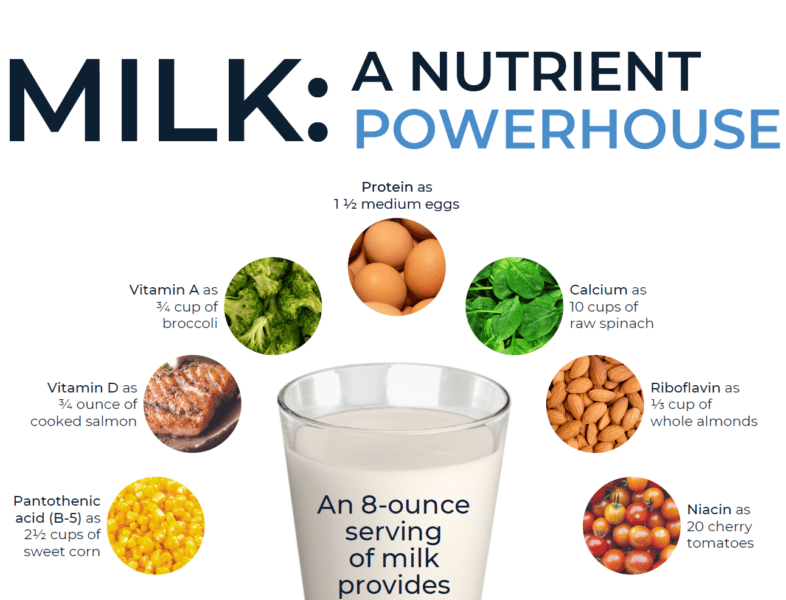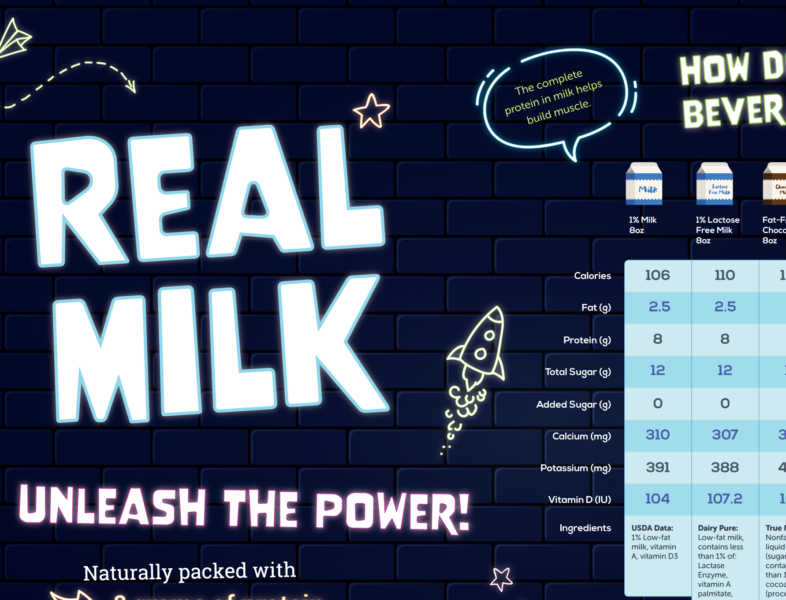Related FAQs
Flavored milk contains the same essential nutrients as white milk and is a delicious way to help people of all ages consume essential vitamins and nutrients important for health.
Consider the following impacts to health and nutrition if milk (flavored or not) is removed from the diet:
- Milk contains calcium, vitamin D and potassium which are nutrients of concern that most American’s don’t get enough of.
- On average, by the time children are 6 years old, milk consumption falls below the Dietary Guidelines for Americans recommended daily servings of dairy.
- Children in the U.S., who drink flavored milk, do not have higher Body Mass Indices (BMIs) compared to non-drinkers suggesting that flavored milk does not lead to weight gain.
- Replacing nutrient contribution from milk requires three to four food items but adds back more calories and fat than were originally contributed by milk
- Additional impacts
Water is important for hydration and should be encouraged throughout the day. When water is consumed at meals instead of milk students often miss out on key nutrients they need more of in their diets like calcium, vitamin D, and potassium. The nutrients lost when students choose another beverage are difficult to make up with other foods while keeping to the same amount of calories and fat.
The Dietary Guidelines for Americans recommend consuming less than 10% of calories from added sugars per day, but state that you can cut down on added sugars and still enjoy the foods and beverages you love. Consuming flavored milk, which is a nutrient-dense beverage, can help children improve their diet quality and meet recommended daily servings of dairy. In fact, research shows that flavored milk contributes just 4 percent of added sugars to kids’ diets versus sodas and fruit drinks, which account for close to half of the added sugar and deliver much less, if any, nutritional value. And flavored milk contains the same essential nutrients as white milk which can help people of all ages consume essential vitamins and nutrients important for health.

 Flavored Milk
Flavored Milk 





